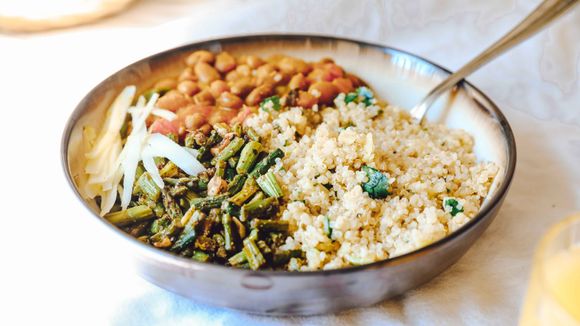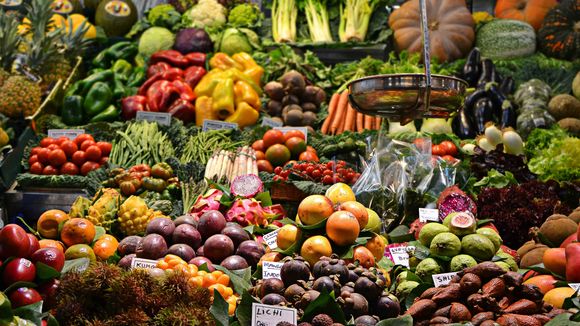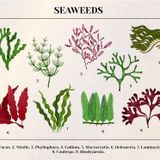The Flexitarian Diet: A Balanced Approach
The Flexitarian Diet, coined by dietitian Dawn Jackson Blatner, is a plant-based eating plan that encourages the consumption of more fruits, vegetables, legumes, and whole grains while still including moderate amounts of meat and other animal products. The goal is to improve overall health by focusing on plant-based foods without the strict restrictions of a vegetarian or vegan diet.
Health Benefits and Disease Prevention
The Flexitarian Diet has been linked to numerous health benefits, including reduced risk for heart disease, type 2 diabetes, and certain types of cancer. A study published in the journal Frontiers in Nutrition found that a flexitarian diet could reduce the risk of heart disease by 32%, type 2 diabetes by 20%, and all-cause mortality by 13% when compared to a more traditional Western diet (1).
(1) Kahleova, H., Levin, S., & Barnard, N. (2018). Cardio-Metabolic Benefits of Plant-Based Diets. Frontiers in Nutrition, 5, 103. doi: 10.3389/fnut.2018.00103
In addition to these benefits, the Flexitarian Diet may also help with weight management, as it is typically lower in calories and saturated fat compared to diets high in animal products. It is also rich in fiber, antioxidants, and other essential nutrients, promoting a healthy gut and immune system.
Protein Sources and Nutrient Balance
A common concern among those considering a plant-based diet is whether they can get enough protein. The Flexitarian Diet offers a variety of protein sources, such as legumes, tofu, tempeh, and seitan, while still allowing for the inclusion of moderate amounts of animal-based protein like fish, poultry, and dairy.
Two Flexitarian Recipes
Lentil and Vegetable Stir-Fry
Ingredients:
- 1 cup cooked green lentils
- 1 tbsp olive oil
- 1 onion, chopped
- 2 cloves garlic, minced
- 1 bell pepper, chopped
- 1 zucchini, chopped
- 1 carrot, chopped
- 2 cups spinach, roughly chopped
- 2 tbsp soy sauce
- Salt and pepper, to taste
Instructions:
- Heat olive oil in a large skillet over medium heat.
- Add onion, garlic, bell pepper, zucchini, and carrot. Cook until vegetables are tender.
- Stir in cooked lentils and spinach, cook until spinach wilts.
- Season with soy sauce, salt, and pepper.

Photo by Shashi Chaturvedula on Unsplash
Chickpea and Quinoa Salad
Ingredients:
- 1 cup cooked quinoa
- 1 can chickpeas, drained and rinsed
- 1 cucumber, chopped
- 1 tomato, chopped
- 1/4 cup red onion, finely chopped
- 1/4 cup parsley, chopped
- 2 tbsp lemon juice
- 2 tbsp olive oil
- Salt and pepper, to taste
Instructions:
- In a large bowl, combine quinoa, chickpeas, cucumber, tomato, red onion, and parsley.
- In a small bowl, whisk together lemon juice, olive oil, salt, and pepper.
- Pour dressing over the salad and toss to combine.
Questions and Answers
Q: Can I still eat my favorite meat-based dishes while following the Flexitarian Diet?
A: Yes, the Flexitarian Diet allows for the occasional consumption of meat and animal products. The key is to prioritize plant-based meals and reduce the overall amount of meat in your diet.
Q: How do I know if I'm getting enough protein on the Flexitarian Diet?
A: By incorporating a variety of plant-based protein sources, such as legumes, tofu, and tempeh, as well as some animal-based proteins, you should be able to meet your protein needs. To ensure you're getting enough, track your food intake and consult a nutrition professional if needed.
Q: Can I follow the Flexitarian Diet if I have food allergies or intolerances?
A: Absolutely! The Flexitarian Diet is highly customizable, allowing you to avoid allergens and choose alternative plant-based options that suit your needs.
Q: Is the Flexitarian Diet suitable for children and pregnant women?
A: Generally, the Flexitarian Diet can be appropriate for individuals at all stages of life, including children and pregnant women. However, it is essential to consult a healthcare professional to ensure proper nutrient intake and address any specific needs during these critical periods.
Q: Can I follow the Flexitarian Diet while eating out or traveling?
A: Yes, the Flexitarian Diet is flexible and can be adapted to various situations. When dining out, opt for plant-based options or dishes with smaller portions of meat, and consider international cuisines that naturally emphasize plant-based ingredients.








